When one thinks of the Mamiya 6; an image of the well renowned 1990’s version comes to mind. However, there was a medium format, 6×6 rangefinder that out dates this model entirely. This is where the Mamiya 6 IV enters the stage, from many many years ago. I have had my eye on shooting medium format for a number of years, although the only thing that really put me off was the price of the cameras needed to shoot the format without the whole ‘lomo’ look and aesthetic.
I wanted something that would produce incredible quality images, be affordable and not be a TLR, as they are a pet hate of mine – they’re very awkward and clunky for me to use, and not to mention the issues I have with anything with a waist level viewfinder. There are SLR options such as the Kiev 60 TTL and the Pentacon Six, but Kiev’s often have a reputation for questionable build quality/reliability, and P6s have slowly risen in price.
This narrows the field down to rangefinders, which can either be found as folding cameras, fixed lens or interchangeable lens flavours. I couldn’t quite afford or get a hold of something like a Mamiya 7 or a Fujifilm GW690, as I am just an impoverished student who often cuts corners to get by. This meant, that a folding rangefinder was the way to go. I have already owned a Zeiss Nettar 518/16, but the usual picky me also hates zone focusing and using external rangefinders. So it had to have a built in rangefinder, offer decent quality optics and be affordable…easy, right?
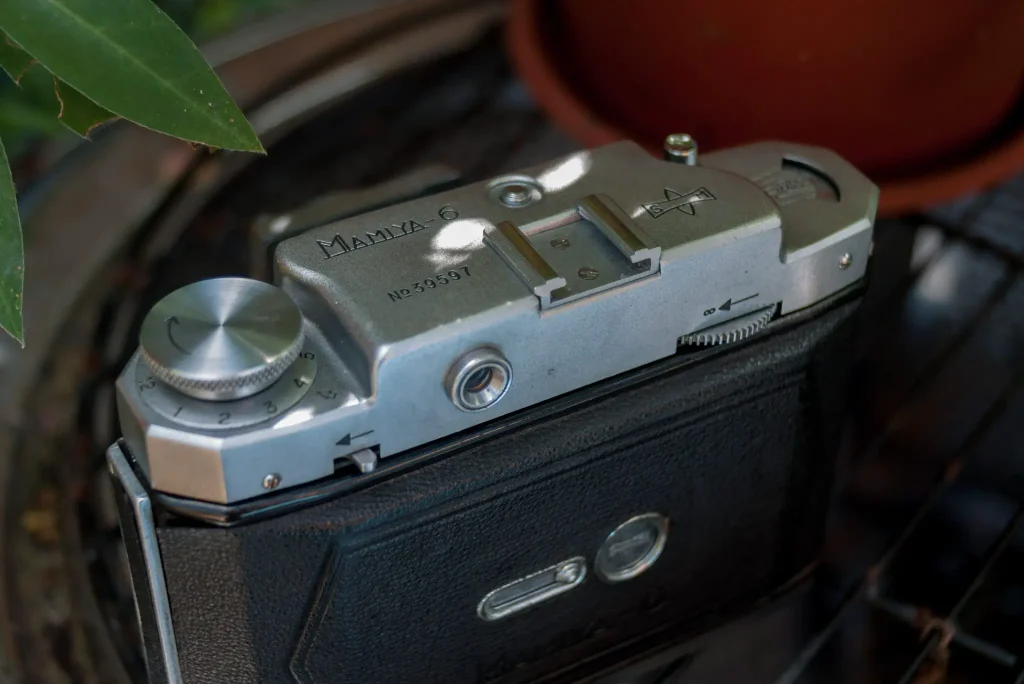
This camera was another acquisition from Soperfect Images in Plymouth. I spotted the camera back in early 2018 in the shop, and totally forgot about it until October 2018 where it resurfaced at the bottom of one of his bundle cabinets of cameras. I asked if I could take it out for a few rolls and see how I get on with it, then we could work out a price (it wasn’t priced at all).
Old cameras can be funny things, and sometimes they just don’t work as they should – and sure enough the rangefinder was totally out of whack, and the lens had some slight haze. After one roll, I offered Russell a sum of which I can’t remember, and exchanged goods. I was the proud owner of a slightly wounded Mamiya 6 IV, with it’s original leather case! The rangefinder was easy enough to calibrate – it was just a task of taking off the top plate, opening the lens on bulb, and trying to match up the distance scale with a measured out distance by turning a small screw situated by the focus wheel (which was rather weirdly, missing). After some swearing, finding a screw that would fit and a couple of hours, it was calibrated to the best that I could do.
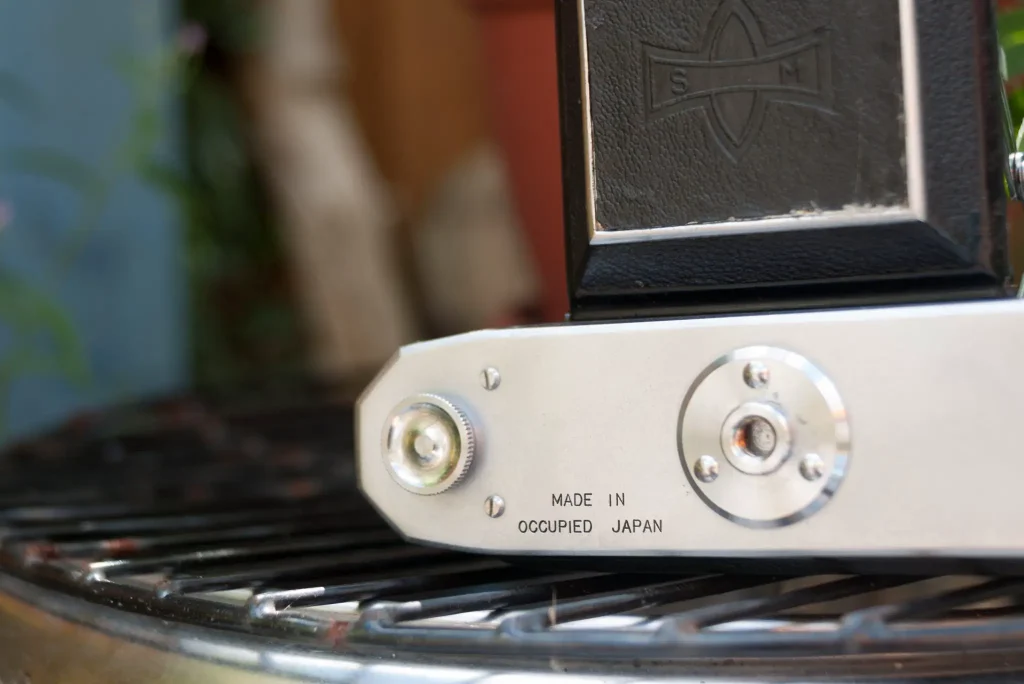
History
Now, time for some back story of the Mamiya 6. It began production in the early 1940’s, and ran up until the 1950’s, with numerous iterations of lens options and film format sizes. The IV was introduced in the late 1940’s and remained as the sole model of the Mamiya 6 range until the early 1950’s – this can be easily dated with the ‘Occupied Japan’ on the base plate; later models included a connected wind and shutter cocking system. My version is the IV with the Zuiko 75mm F3.5, which for such an old lens performs amazingly well, all things considered. Some early models also featured a small waist level finder, as well as various shutter speeds and aperture values.
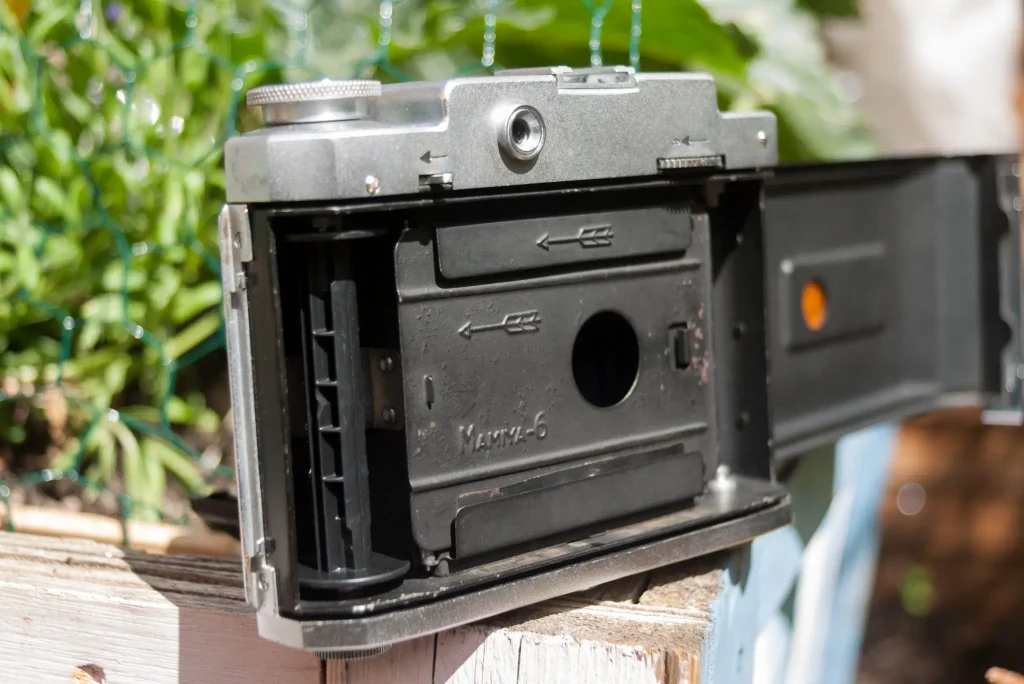
The use of the Mamiya 6 IV is incredibly idiosyncratic, my version at least. The 6 IV focuses not with a moving lens, but with a moving film plane that’s operated by a thumb wheel on the back, with a counter rotating wheel that shows the distance and DOF. At first, I hated this way of focusing as it felt so alien. Despite the early onset hatred, I grew to love its function. It’s so much more intuitive and seems to make more sense the more I use it.
The Mamiya 6 IV lens has to be cocked every time you want shoot, and there is a small knob on the left of the camera that you have to switch when the shot has been taken to prevent double exposure and overlapping frames (and a little flag pops in the incredible small viewfinder). The loading is also rather intricate, as one has to remove the pressure plate and feed the film between some grooves, and place the plate back in. It’s a simple camera really…
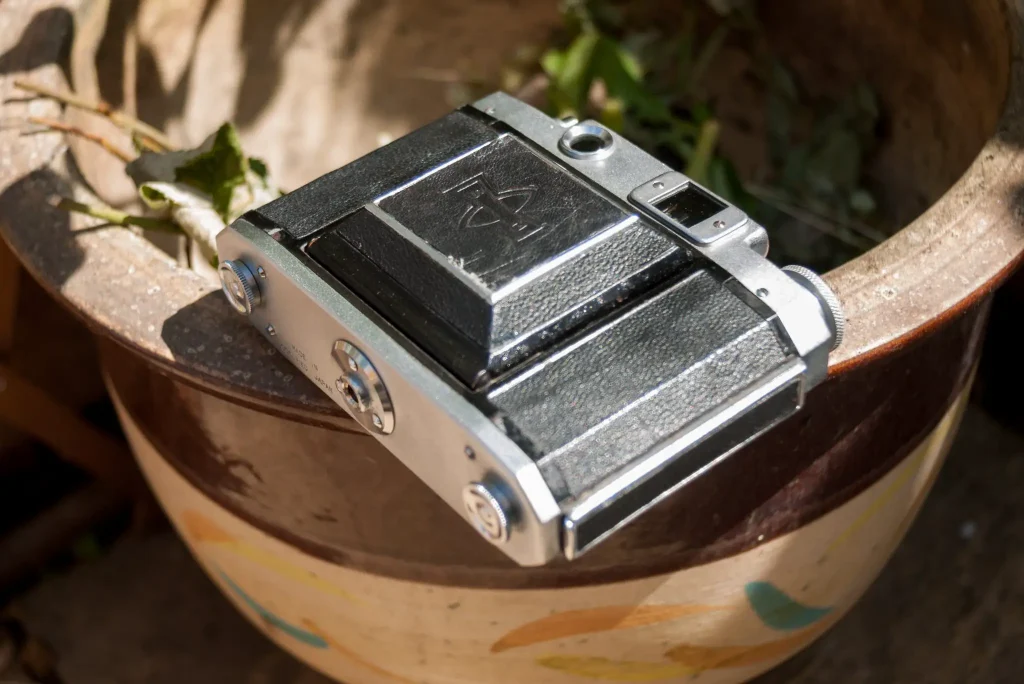
Once the Mamiya 6 IV is up and running, and once the operation is tied down to a tee, it’s a breeze to use. It does however take some getting use to, especially if you’re used to using film and digital SLRs. Nevertheless, if you’re used to rangefinders and folders, it’s really easy to use. There is even an automatic frame reader, which should be able to detect when the next frame is ready…but mine doesn’t work. Thankfully, Mamiya thought of this and placed a window on the film door, and a little hole through the pressure plate so that you could read the frame numbers.
Once you’re done shooting with the Mamiya 6 IV, it can fold up and take up not too much room. The camera is rather weighty, but when it’s folded it can fit into a large coat pocket if needed. The folding mechanism is operated by a small button on the top plate, where the lens flips out – then it can be placed back by pushing the two arms either side of the lens plate.
One thing that is annoying about the 6 IV is the lack of strap lugs and it’s terrible ergonomics. I usually take the case off when I am using it, as it just flaps around and gets in the way, and more often than not, holding the camera can get quite slippery if you’re shooting it for a while.
When all 12 shots have been completed and the film has been wound to the end, the roll can be removed by pulling the knurled knob on the base place to release the film – this is also the same when loading the film.
Example Images
Below is a selection of images taken with the Mamiya 6 IV in various locations. The negatives have been scanned with an Epson V850 Pro at a DPI way too high for normal use.
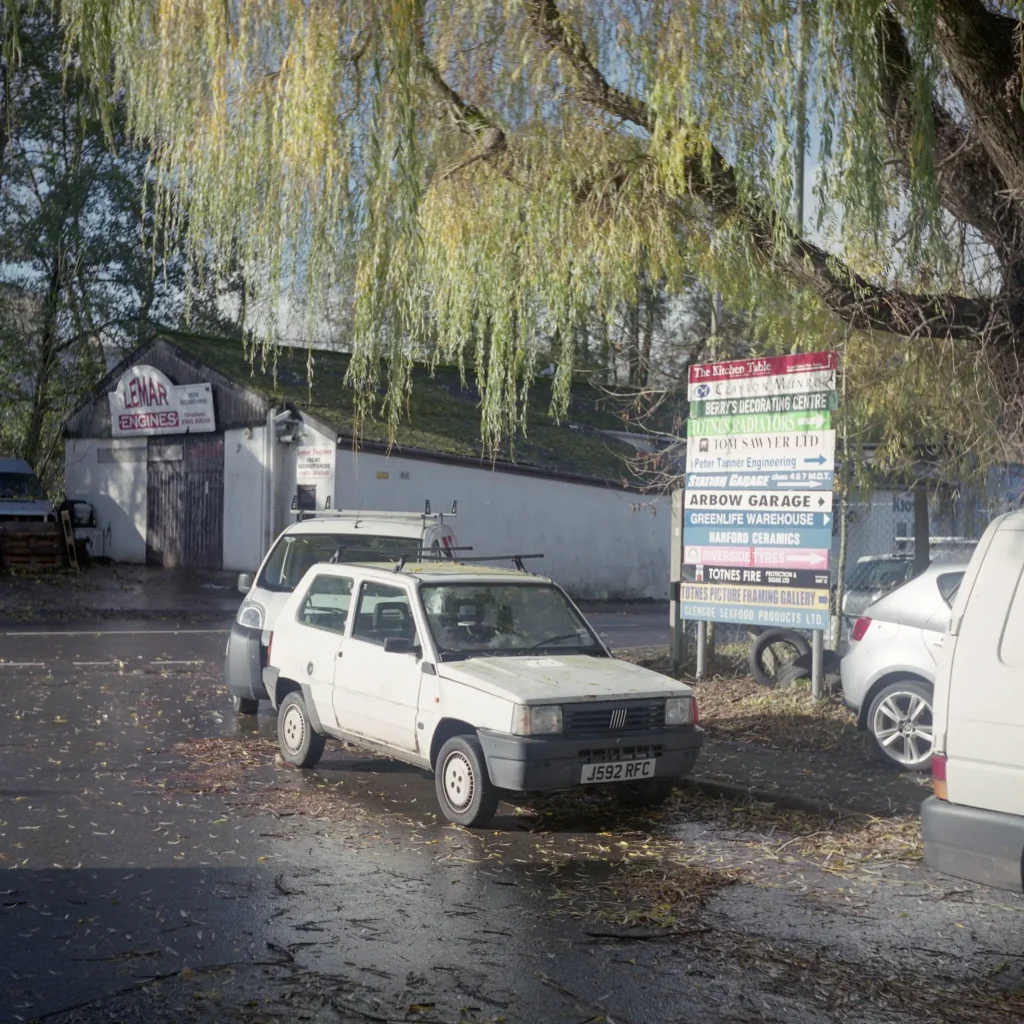
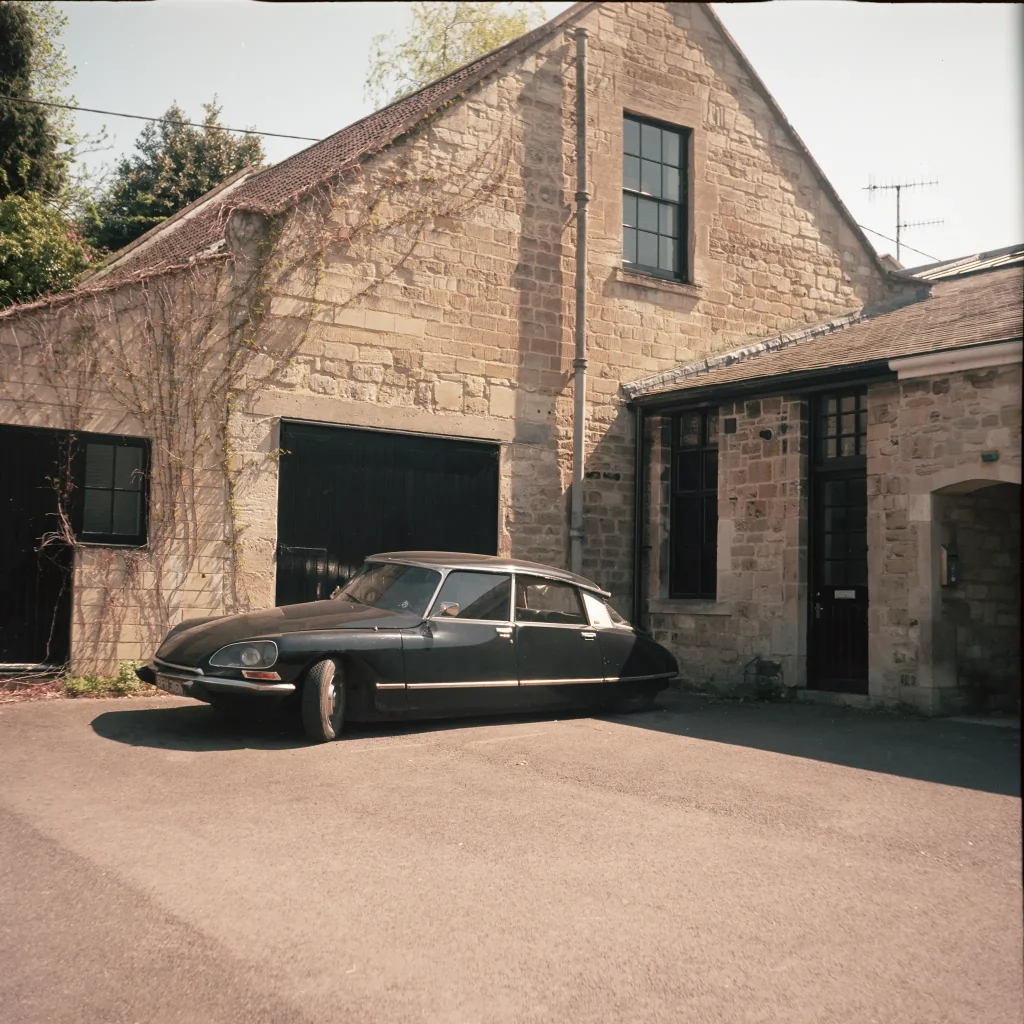
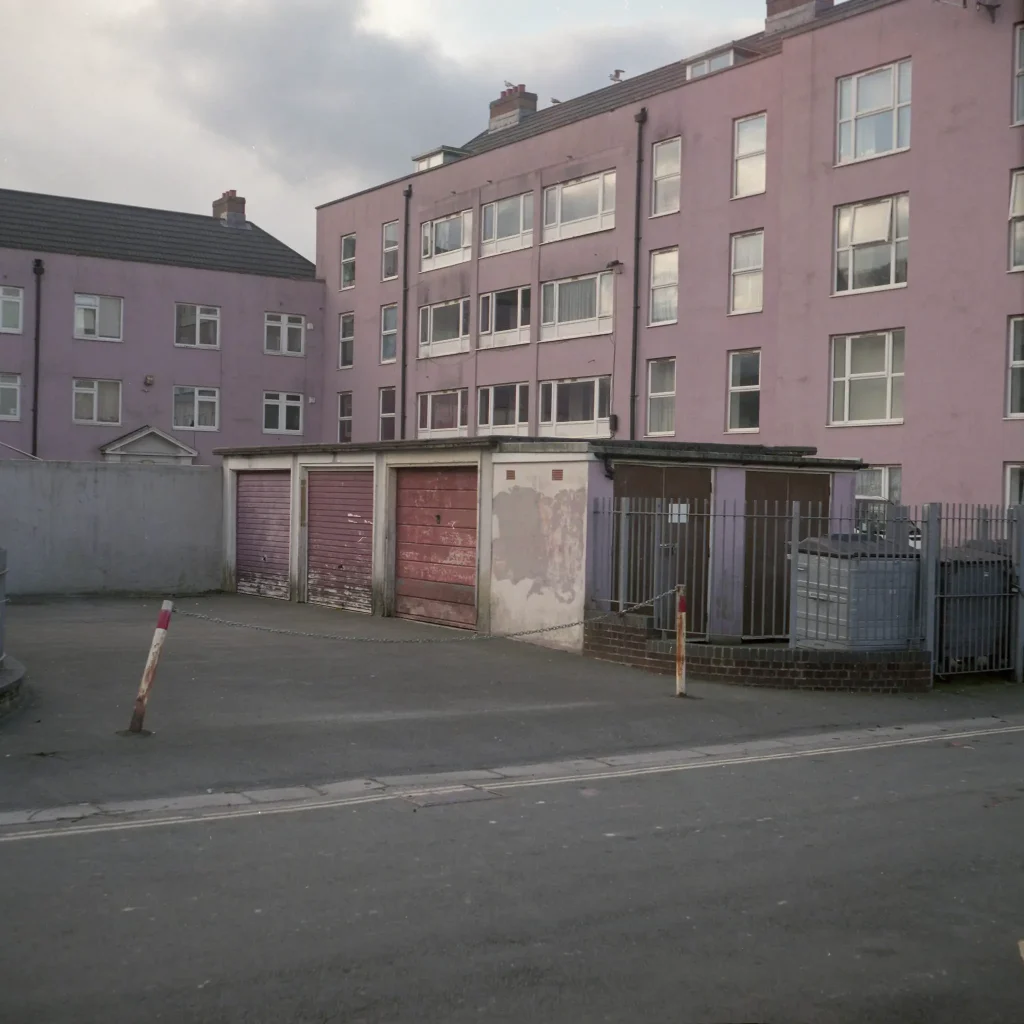

The images produced by the Mamiya 6 IV are surprisingly decent. The centre has a definite sharpness, with some softness towards the edges, especially at apertures lower then f/5.6. When stopped down to f/8 or higher, there is still some slight softness and what I like to call: Optical Nuance. There is something very ethereal about what it creates – the images have this certain look and feel about them. Perhaps it’s the dated lens design or the slight haze that still lingers within some of its optical elements.
This last image was shot wide open at f/3.5. Here, you can see that the lens performs rather well for such a dated design, and offers up some interesting bokeh, as well as what some people might call ‘3D pop’. I am also astonished that my hack-job calibration worked as well as it did. Overall, the Zuiko optics are phenomenal, and offer some incredible performance from a camera getting to 70+ years old.
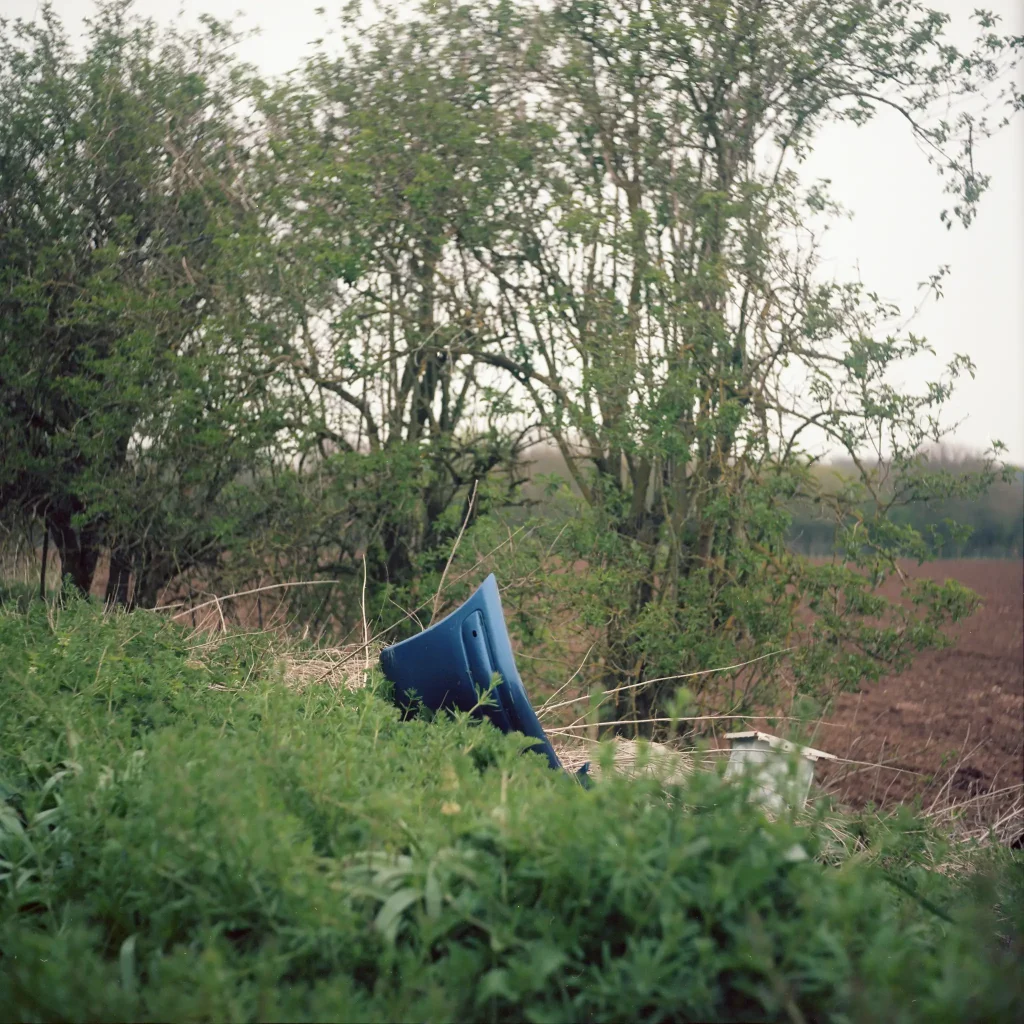
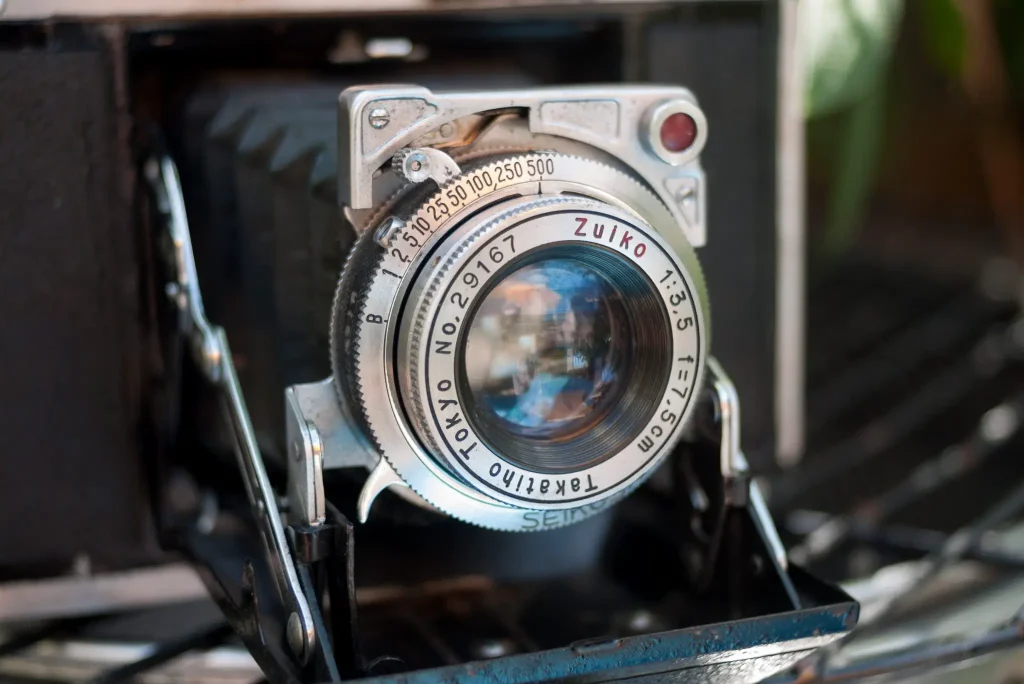
Is It Worth It?
Is the Mamiya 6 IV worth buying? That might be the million dollar question – but that all depends on what you’re looking for. As a collectors piece of photography or Mamiya’s history, it’s a sure fire purchase. If you’re looking for a folding rangefinder that isn’t one of the Zeiss’, or just something for a change of pace, it might be worth it.
The inherently idiosyncratic operation of the Mamiya 6 IV might put potential shooters from even picking it up, although once that has been normalised, it really is a nice camera to use and outputs some fantastic quality images. They are seldom sold from the U.K, but they’re often from Japanese sellers on eBay and can be found for upwards of £80, with mint condition flavours often seen pushing £150.
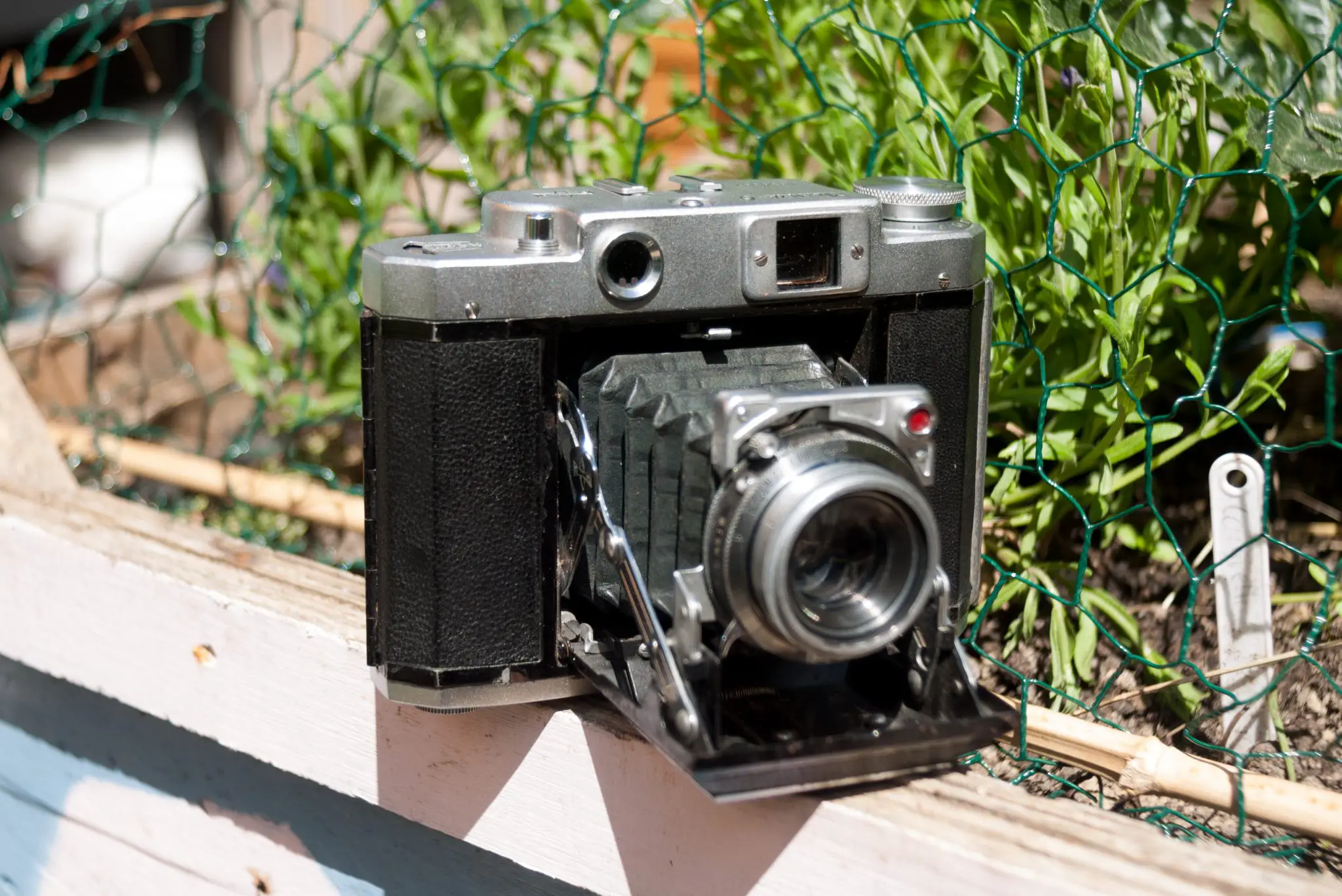
There are a few things to look out for, mind. Slow speeds can often be sticky, as usual with old camera that aren’t used all too often – cameras like to be used. The film pressure plate is removable, so make sure that the camera actually comes with that, otherwise it’s fairly fancy paper weight and I doubt that many replacements can be had. Usual things like lens optics having fungus or the viewfinder are also common, but this expected from cameras that have been on this planet for 70 years and potentially kept in a bungalow loft in Norwich. Another big one is tears or rips in the bellows. Over time, the bellows can become brittle and form small tears, rips or cracks that let light into the usually light-tight area. This can be fixed with some special adhesive, or professionally replaced.
Ultimately, what the Mamiya 6 IV offers is an alternative route into medium format shooting, as well as a camera that differs from the usual crowd of large and bulky SLRs and awkward TLRs. This Mamiya offers up a unique way to shoot 120 film, and it’s sure to start conversations that start with “Oh what’s that?”. There are plenty of options out there to shoot medium format, but perhaps the 6 IV is worth considering – it certainly ticked some very specific boxes for me.
If you want to see more of my work, please head over to @raygoodwinphotos on Instagram. I Also have a few articles right here on 35mmc.
Share this post:
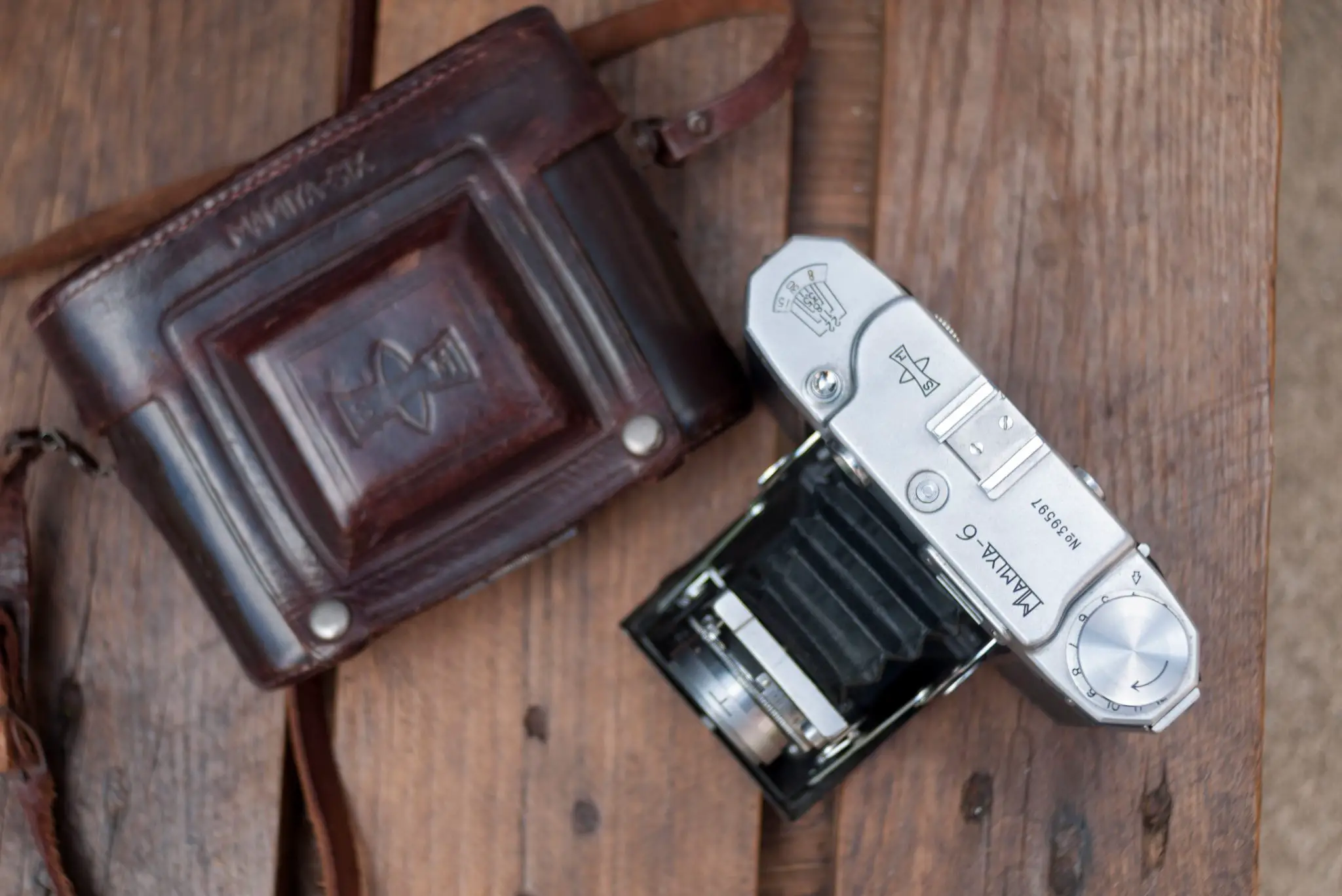








Comments
Roger B. on Mamiya 6 IV Review – The Original 6- by Ray Goodwin
Comment posted: 16/08/2019
Comment posted: 16/08/2019
Scott on Mamiya 6 IV Review – The Original 6- by Ray Goodwin
Comment posted: 16/08/2019
It may seem odd to us now that the lens on this Mamiya camera was made by Olympus, but camera makers at the time often bought lenses from other firms.
The lens on these cameras is almost always foggy; gently cleaning the inner elements makes a huge difference in picture quality.
What always struck me was the difference between the tank-like body, which feels like it was stamped out of a block of steel, and the somewhat flimsy feel of the bellows, lens and shutter assembly.
In any case, it's a great picture taker, and carrying it around will build up your arms.
Comment posted: 16/08/2019
Jesse on Mamiya 6 IV Review – The Original 6- by Ray Goodwin
Comment posted: 16/08/2019
Comment posted: 16/08/2019
Andrew in Austin, Texas on Mamiya 6 IV Review – The Original 6- by Ray Goodwin
Comment posted: 17/08/2019
Many photographer still use TLR cameras. I have found them to be bulky for travel and as you wrote clunky. Medium format folders were a revelation that are for my use more bicycle friendly. Image quality on the few models that have unit focusing are equal to what one can expect from a Rolleiflex with a Tessar. My favorite 6x6 folder for street use is an Agfa Super Isolette. - It has a film winder that automatically stops at the next frame, a coupled rangefinder and a superb unit focusing lens.
These cameras fill a niche. I like how both a compact 35mm RF like a Retina IIa or a Barnack Leica and a medium format folding camera can fit into my smallish over the shoulder satchel that doesn't look like a camera bag. If you can deal with a scale focusing 6x6 - a Voigtlander Perkeo II is an option that is smaller than most 35mm RF cameras.
Andrew in Austin, Texas on Mamiya 6 IV Review – The Original 6- by Ray Goodwin
Comment posted: 17/08/2019
Comment posted: 17/08/2019
Johan on Mamiya 6 IV Review – The Original 6- by Ray Goodwin
Comment posted: 17/08/2019
Comment posted: 17/08/2019
Dennis Raines on Mamiya 6 IV Review – The Original 6- by Ray Goodwin
Comment posted: 27/08/2019
Slava on Mamiya 6 IV Review – The Original 6- by Ray Goodwin
Comment posted: 09/01/2020
@One thing that is annoying about the 6 IV is the lack of strap lugs and it’s terrible ergonomics
I feel your pain! I've solved that problem with a shoulder strap which mounts to the tripod socket into the camera.
Mamiya-6 Automat review - Kosmo Foto on Mamiya 6 IV Review – The Original 6- by Ray Goodwin
Comment posted: 02/02/2020
William on Mamiya 6 IV Review – The Original 6- by Ray Goodwin
Comment posted: 25/09/2020
Shubroto Bhattacharjee on Mamiya 6 IV Review – The Original 6- by Ray Goodwin
Comment posted: 02/12/2020
No surprise about the quality imagery from that Zuiko lens — it was made by ‘The Olympus Optical Company, established in 1919 under the name of "Takachiho" - mythical mountain ruled by the Goddess of Sun which may be compared to Greece's Mount Olympus. In 1936, it began the production of camera lenses and selected the name of ‘ZUIKO’ — quote from MIR.
Enjoy that glass!
Daniel Pete Rainwater on Mamiya 6 IV Review – The Original 6- by Ray Goodwin
Comment posted: 01/02/2024